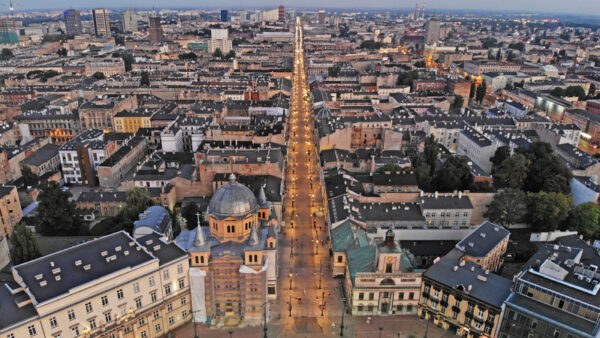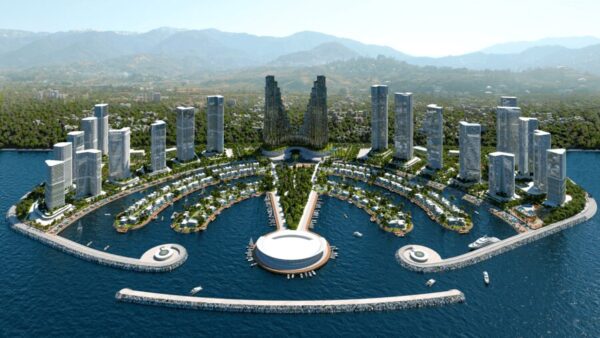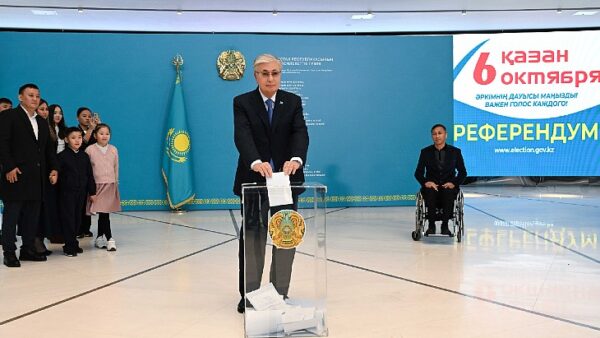
The US and the EU have joined forces with the African Development Bank (AFDB) and the Africa Finance Corporation to launch the west’s latest attempt to counter China’s Belt and Road Initiative.
The parties have signed a memorandum of understanding setting out plans to develop the “Lobito Corridor” and the Zambia–Lobito railway, which will together form a link across Africa through a number of large mineral deposits.
The deal was done on the margins of the Global Gateway Forum in Brussels, an invitation-only meeting of EU governments with companies, banks, and international organisations intended to promote international infrastructure.
The State Department said in a press statement that the project was “the most significant transport infrastructure that the US has helped develop on the African continent in a generation, and will enhance regional trade and growth as well as advance the shared vision of connected, open-access rail from the Atlantic Ocean to the Indian Ocean”.
The projects will be carried out under the auspices of the Partnership for Global Infrastructure and Investment, the G7’s response to the BRI, launched in June last year at the Schloss Elmau summit in Germany. The idea is to invest over $600bn by 2027 to close infrastructure gaps around the world.
The US and its allies have tried before to launch schemes to compete with Chinese infrastructure largesse in the developing world.
In 2013, then president Barack Obama launched his “Power Africa” initiative aimed at investing $7bn to add more than 10,000 megawatts of clean electricity. It fizzled out.
The G7 tried again in June 2021 with its “Build Back Better World” scheme, intended to funnel billions into infrastructure in Latin America, the Caribbean, Africa, and the Indo-Pacific.
The latest version is more targeted.
Helaina Matza, the special coordinator of the partnership, said in a digital press briefing that the idea was to finance rail refurbishment from the Angolan port of Lobito to the border with the Democratic Republic of Congo (DRC).
A new railway from northwest Zambia would join that line.
She said the aim was to “demonstrate collectively, together, that you can invest, and you can invest in large-scale infrastructure. And … this consortium is a great example of that.
“It’s 800km of new greenfield rail cutting between Angola and Zambia. It involves a large contribution from AFDB that they’re sorting out the parameters. And collectively, all funding partners put together around $10m to start the feasibility study before the end of this year.”
The project also involves building 260km of roads and about 550km of track in Zambia, spanning from the Jimbe border to Chingola in the country’s copper region.
As well as the railway, the corridor will involve 4G and later 5G telecoms systems and a billion-dollar investment in solar farms and microgrids.
South African broadcaster News24 notes that the US and the EU have adopted a scheme that was already under way.
In July this year, Zambia, the DRC, and Angola signed their own memorandum of understanding on progressing the corridor. A consortium led by multinational commodities trader Trafigura had already been appointed to run a $570m rehabilitation scheme.
Ms Matza said: “When we found the opportunity to support the work that the DRC Government, the Angolan Government, and the Zambian government had already decided they wanted to do in their tripartite agreement, which they very serendipitously signed on 4 July this year, we wanted to make sure we were doing everything we could to help with those efforts.”
News24 commented: “This is a direct challenge to China’s BRI, largely viewed as an unsettling extension of China’s rising power.
“However, it will be impossible to avoid working with China on the Lobito project since Mota-Engil, partly owned by China Communications, signed an agreement to run the Lobito Corridor as part of the Trafigura consortium.”
Further reading:
Comments
Comments are closed.











Why challenge brics just work together to help thy neighbours
This is a very good idea, the sponsors are well done. I wish that they should extend this type of project to other African nations such as Nigeria, God has so blessed Nigeria with abundant various mineral resources that the World round needs. When we are connected the World will get their various needs from (us) Nigeria.
God bless you, and I thank you.
This is great. We need to add Mozambique to the mix and then revamp the Zambian rail network so as to connect Tazara. If we do this then we shall decongest the Zambian road network from the heavy load traffic criss crossing the country as it services neighbouring countries. Zambias strength lies in it central position with the ability not only to facilitate road and rail traffic but also marine transport across Lake Tanganyika to link Burundi which in my view is Zambias undeclared 9th neighbor. Zambia is also well placed to link Southern and Eastern Africa with optic fiber telecommunication. This will wean the area on depending on satellite links which are foreign controlled and costly.
That’s great but what about South Sudan
This is a great initiative and about time too. It’s the best and most practical response to Chinese influential inroads into Africa. The west needs to provide a balance if not overtake Chinese initiatives in Africa.
Great historical Road to connect All Africans country. Mostly welcome.
Outstanding, economy of all parties will probably boom providing more jobs and stability,very constructive thinking.
This $600 billion infrastructure program for Africa seems to be targeted at the exploitation of Africa’s resources for the west. It is not intended to improve transportation among African states but to link mining sites to ports of exploitation. If I am wrong, may someone right me? There is no free lunch from the west for Africa.